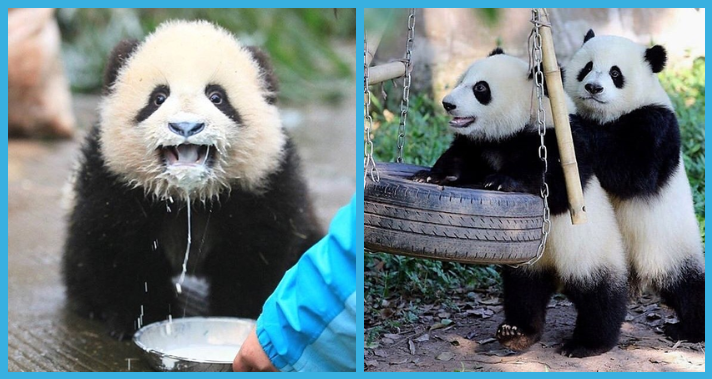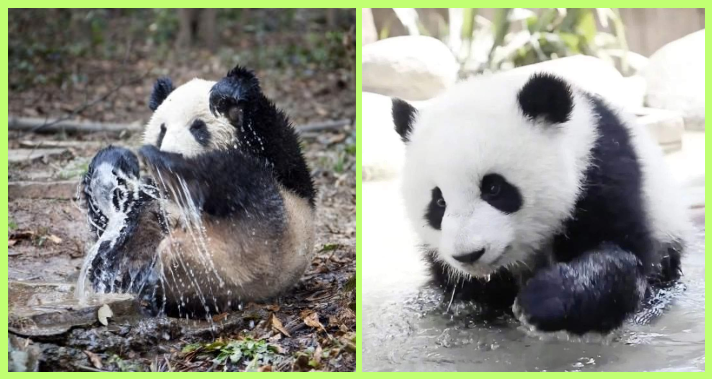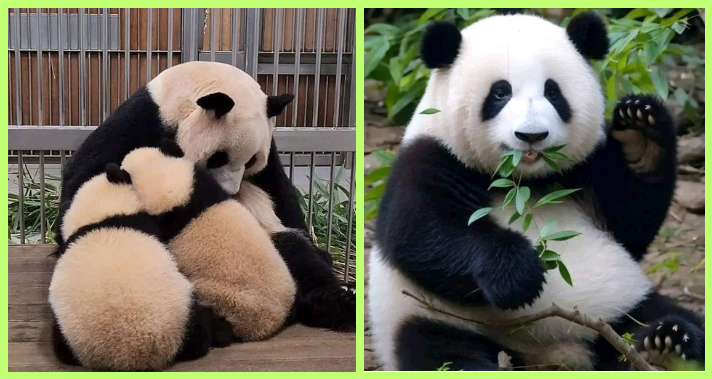Pandas may seem soft, calm and gentle, but being a panda in the wild means being strong, aware and having survival skills. Unlike many wild animals, the pandas do not use aggression and constant fighting to protect themselves. Instead, they lead a peaceful lifestyle and rely on natural means such as avoidance, camouflage, climbing, scent marking and quiet movement to keep themselves safe. Their method of survival demonstrates that it is not always strength and battle that grants power but intelligence and calm behavior. Another interesting point to note here is that pandas in the wild will not use force or violence to defend themselves.
Pandas Protection in the Wild
Panda live mostly in the mountain forests of China. Their home is full of bamboo, high trees, dense fog and stony ground. In this environment, pandas prefer leading a quiet life. They do not group up into packs or groups. They prefer to live alone and not get into unnecessary conflict. Their peaceful nature assists them to stay away from danger instead of to face it head-on. Instead of fighting, they utilize their environment and animal instincts and stay out of harm’s way. Pandas may be sized and their movements relaxed enough to make them seem vulnerable, but they are actually cleverer than they are. They know how to blend into their surroundings, they are able to sense danger in time and run silently when danger is present. This gentle way of survival helps them to conserve energy and also avoid the risks.
One of the biggest secrets of a panda’s survival is color of the panda’s fur. At first glance, their black and white attire is strange, but it is a sort of camouflage. In snowy regions, their white-colored fur blends in with the snow. In the darker parts of the forest, their black fur blends in with the shadows of the trees, rocks and bamboo. This helps them to avoid detection by other animals at long distances. Their fur is not only for beauty, but serves as a level of protection that speaks no words. It obscures them in plain sight, and protects them from being noticed. The mountains they live in often have mist, fog and dim lighting. In such places, their colors help them to disappear in their surroundings. This minimizes the likelihood of conflict before it is even started.
#1. Living softly in a loud world

#2. Peace begins with a panda’s smile

Pandas are solitary animals. They do not form in groups or live in herds. Each panda has their own territory where they can eat, sleep, and move quietly in their territory. The fact that pandas live solitary lives prevents them from competing for food and living space. They usually seldom meet other pandas except for copulation season or occasional accident. Their territories do not overlap much. They scent-mark their territories so other wolves do not infringe on their territory. This keeps the distance between individuals and avoids fights over food or land. Their quiet lifestyle in separate spaces is one of the main ways that they stay safe without fighting.
#3. Forever hungry and forever adorable
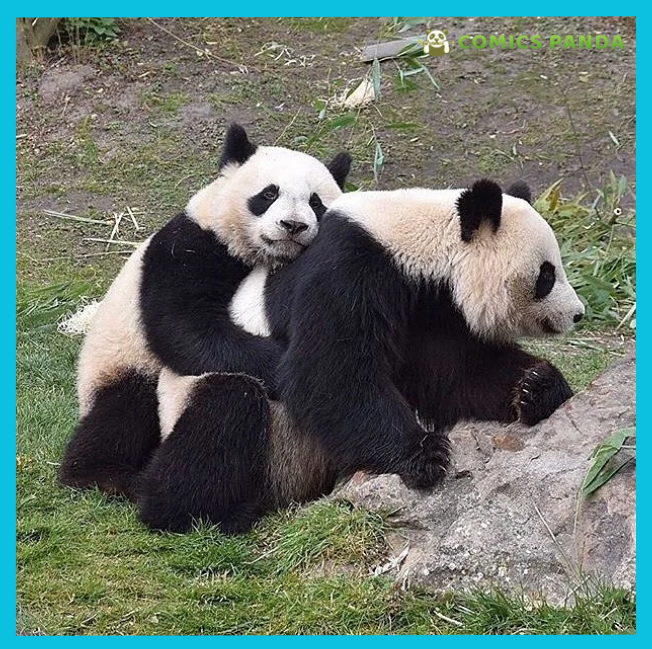
#4. Born to nap under the trees

Communication is important to panda survival. Instead of using loud calls or displays of power, pandas have scent marking. They also possess olfactory glands that are located beneath their tails. By rubbing their bodies or spraying the scent on trees, rocks or the ground they leave a message. These scent marks are used by other pandas to know where the boundary of the territory is, the sex of the other panda, and if the territory is safe or not. Another panda smells it and knows what the message is and wouldn’t mess with it. This system of silent communication helps to maintain peace and order in the forest. It enables pandas not to walk into another’s territory and having a fight.
#5. Floating through life like a peaceful panda

#6. Just a panda enjoying the little things

Pandas do not only use their eyes to see danger coming. Their sense of smell and hearing is much stronger. They are able to smell other animals’ scents and know whether a predator is nearby. Their ears pick up the slightest sound of a movement in the forest. Due to the use of these senses, pandas are aware of when they need to move out of the way before danger gets too close to them. They do not wait for the fight to start. Their natural instinct is to quietly walk in the opposite direction or climb in any safe tree. By having this early realization, they are safe without physical fighting. Climbing is another important method of protection for the panda in the wild. Their strong legs and sharp claws and flexible bodies enable them to climb up tall trees and steep rocks. When they feel threatened, they climb quickly upwards so that they can be out of harm’s way of being attacked.
#7. Peace comes naturally to pandas
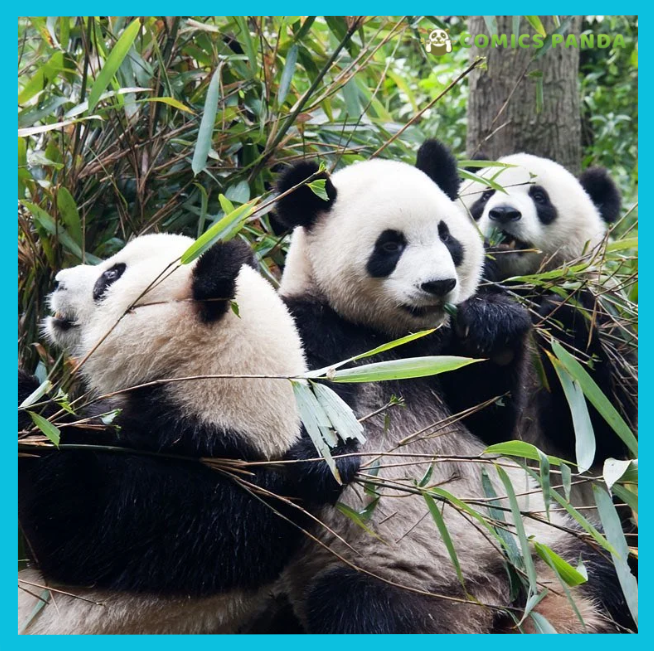
Trees in the forest provide a better view of the surrounding landscape and keep them away from ground predators. High branches provide a resting place, safety and time to make a decision for moving on. Climbing is a form of defense used by panda cuisines because they do not rely on physical strength. It is not a fight but a clever escape. Pandas are a very large animal, but they are silent in their movement. They have thickly padded feet so their movements make so little sound. They walk slowly and carefully avoiding dry leaves and noisy ground. This helps them to travel through forests without drawing attention to them. Because of their quiet movement they are able to make peaceful approach to bamboo areas, drink from streams, or rest in hidden places. Silence is their shield. It helps them to protect from being noticed by animals that may cause harm to them.
#8. Baby panda enjoying the milk
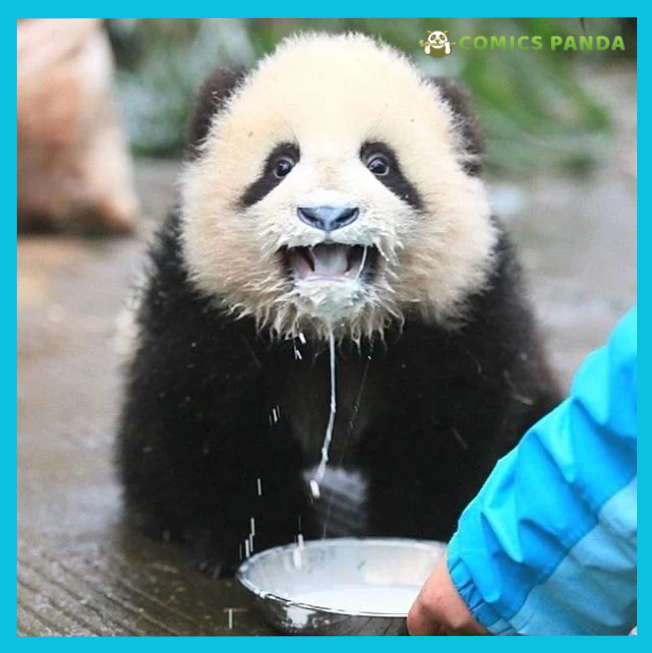
Bamboo is the main source of food for panda, but its content is low in energy and nutrients. Panda consumes a lot of bamboo daily to be alive. As their diet is poor in strength, they can not afford to waste energy on fighting. They are protective and they avoid danger rather than confronting it. To conserve lighting their energy, they have a habit of sleeping frequently, moving slowly, and remaining calm. Unhealthy lifestyle cuts down energy consuming behaviors contributing to their longer period of living and healthy living. Fighting would expend too much energy and could cause injury which is dangerous in the wild. Instead, panda opt for peace and distance as their safety. Even though pandas do not want to fight, they are not weak animals. They have muscular jaws, sharp teeth and powerful muscles. They are able to defend themselves if absolutely necessary. But they don’t like to fight unless they don’t have any other choice. Their strength gives them confidence but their calm nature gives them wisdom.
#9. Heart full of calm, paws full of bamboo

#10. If softness was an animal, it would be this

Their harmonious lifestyle is proof that real strong means not always aggressive. Sometimes, it means having the ability to remain peaceful even when living in the wild. Pandas defend themselves by means of nature’s low decibel way. They stay away from danger, use their senses wisely, blend in with their surroundings and clamber to safe places. But their black and white fur, their quietness, their solitary lifestyle and their strong instincts enable them to survive without resorting to violence. In having to survive, they show that survival is not necessarily about power or speed. Sometimes, it is peace, patience and wise decisions. If you liked this blog, you are welcome to spread the word about it and browse our website for additional stories about wild life and nature.

